
“When I think back on the decisions I made that veered me away from “traditional” ethnography, it was always because the material demanded a certain kind of engagement and a particular process and formation. The material demands its own form theoretically, philosophically, and politically in order to be truly effective. Because our material isn’t physical in the sense of an architect’s or a sculptor’s, we come late to the realization that artists come to early on… Think of a woodcarver who encounters a knot in the wood. They do not cut the knot out; they work with it and it becomes part of what they create.” (The Knot in the Wood: The Call to Multimodal Anthropology – American Anthropologist 3/12/19)
Splinters of a Careless Alphabet

After my first book on the visual culture of post-Revolution Iran – moving into the visual medium was a natural and necessary progression from text-based ethnography.
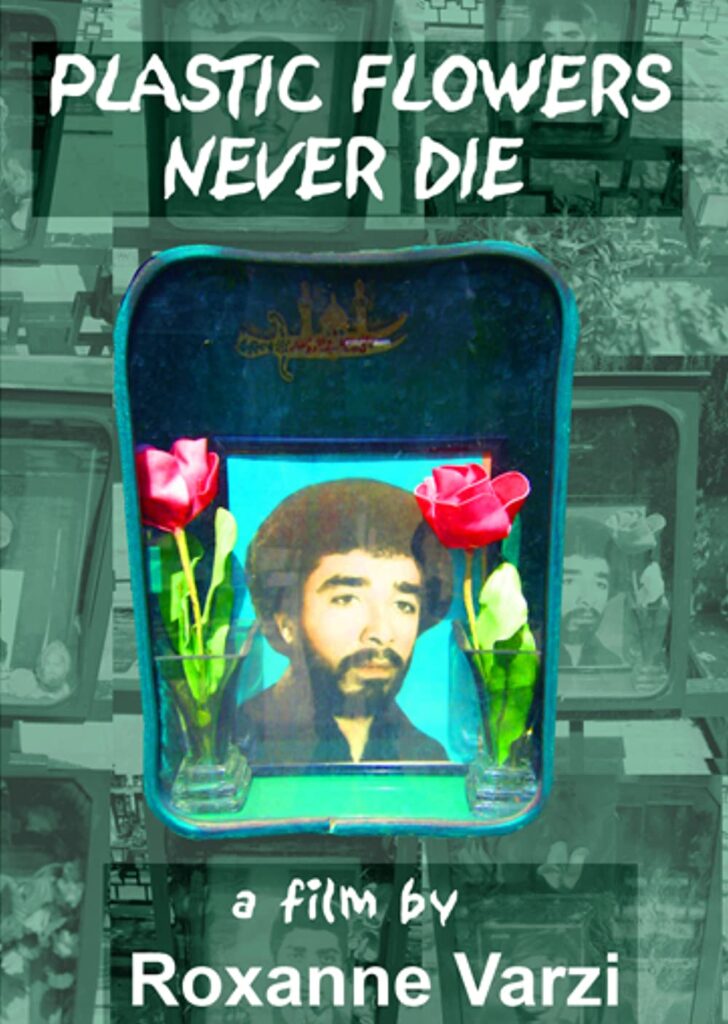
After experimenting with ethno-fiction in parts of my first book I decided to write my second book, Last Scene Underground, about theater in contemporary Iran, fully as ethnographic fiction.
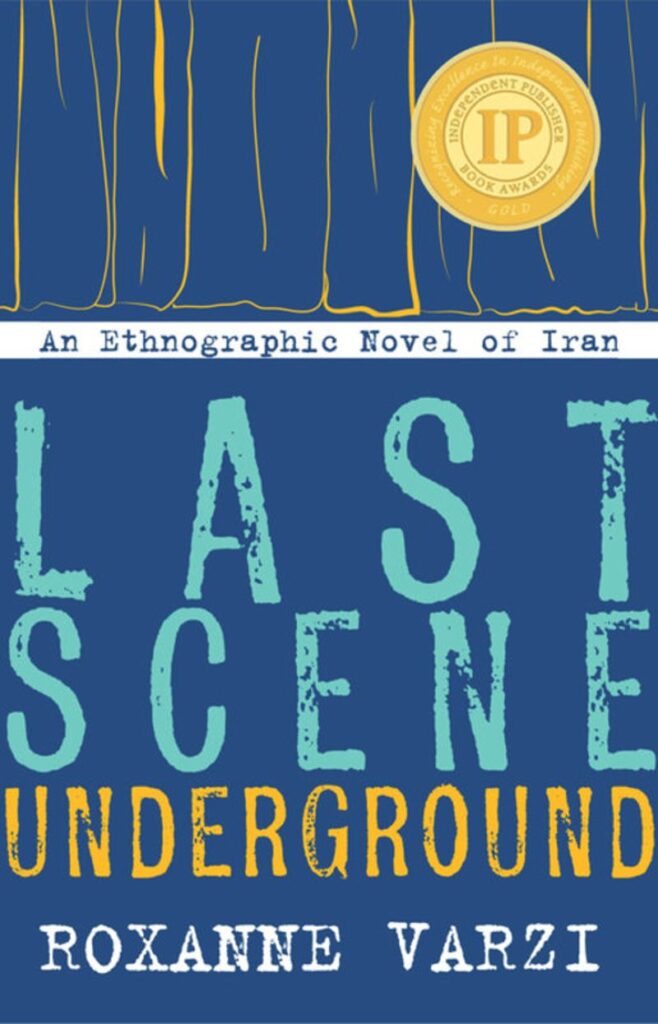
The book was also the beginning of my academic work in theater and philosophy, which is why being in conversation with the fabulous director Peter Sellars about my work made complete sense!
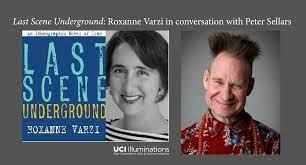
Roxanne Varzi reads from her novel, Last Scene Underground
My mission is to make my work accessible which is why I also produced the work as an audible book for people who prefer or need to experience text through spoken word. And because I wanted the “foreign” words pronounced properly, I performed it myself:
https://www.audible.com/pd/Last-Scene-Underground-Audiobook/B01FT6M6RE
To this end, my project on war photography became my first sound project. In The Whole World Blind I aimed to disrupt the power relation between the watcher and the watched.
As I continued to research and teach about war and photography I found that even visual research needs a medium other than film. Especially after Virginia Woolf, who influenced Susan Sontag, reminded me that showing visual images of war would only reinscribe their violence.
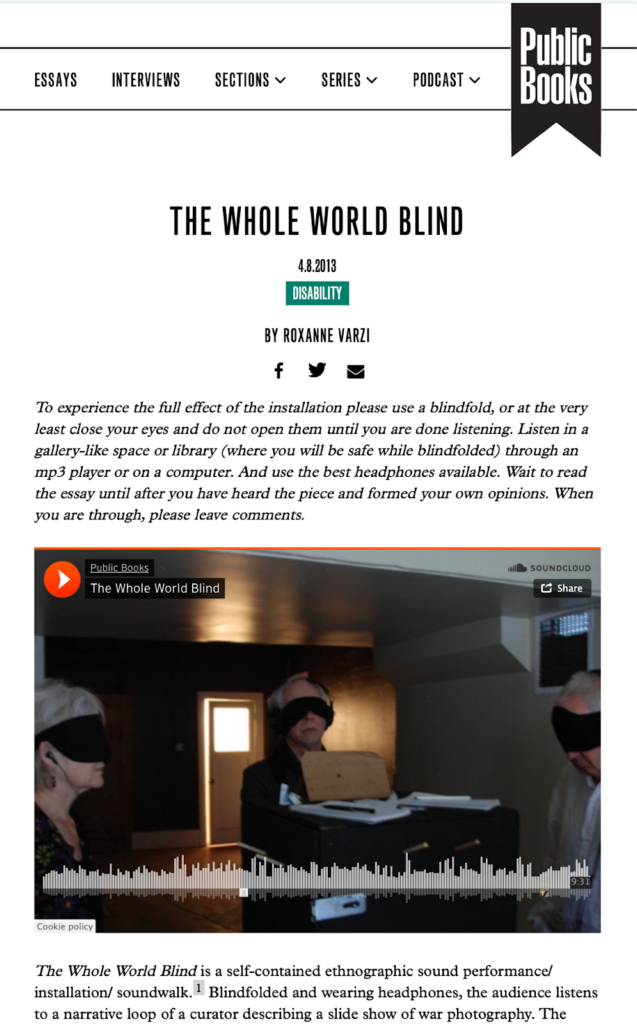
That project led to an invitation by the Ohrenhoch Gallery in Berlin to make another piece. I wanted to work on climate change in my own neck of the woods, and I chose to look at the Salton Sea, playing with the religious idea of the sublime – being moved by both nature’s awe-inspiring beauty and its danger. Salton Sublime meditates on the meaning of sublime today in the midst of massive environmental degradation. This time the material that I had set out to make as a sound project on the Salton Sea, demanded images, otherwise how else to juxtapose the beauty of the landscape with its extreme toxicity?

My last film project was a playful first person film about Iran.
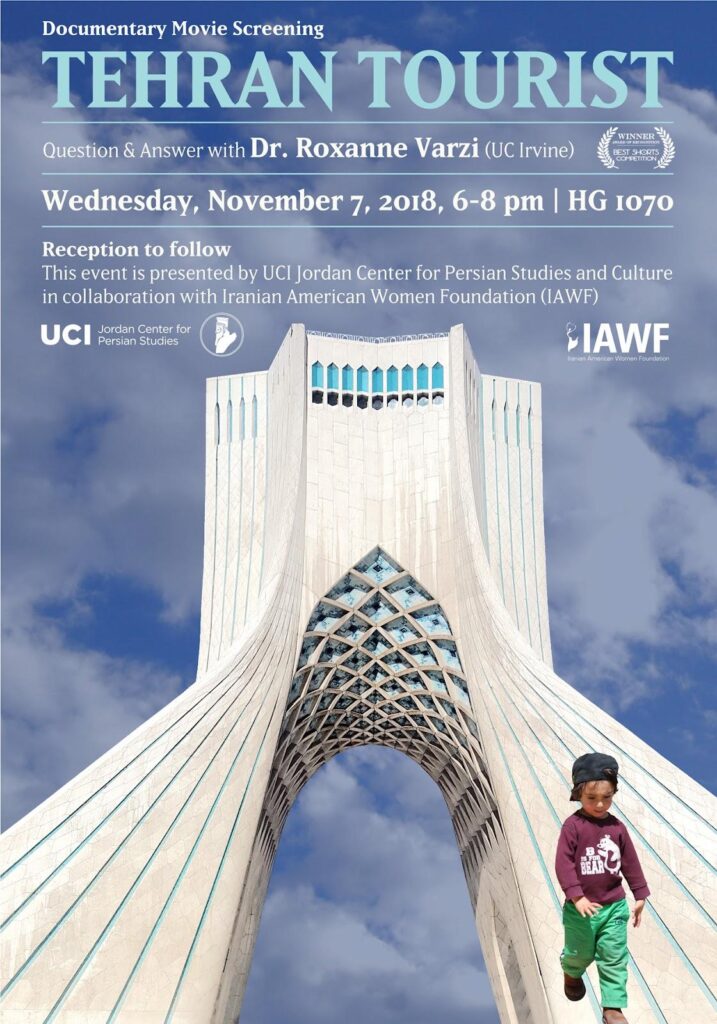
“Architecture, like anthropology, is a defining of meetings between people, materials, and environments where the architect, or anthropologist, provides the joints and connections that bring and keep these entities together.” (The Knot in the Wood: The Call to Multimodal Anthropology – American Anthropologist 3/12/19)
Finally, what I will be presenting at the conference, via video, is my first full-lenght play about the French philosopher of Islam, Henry Corbin. What I love most about working in theater is collaboration, it feels naturally like an ethnographic space.
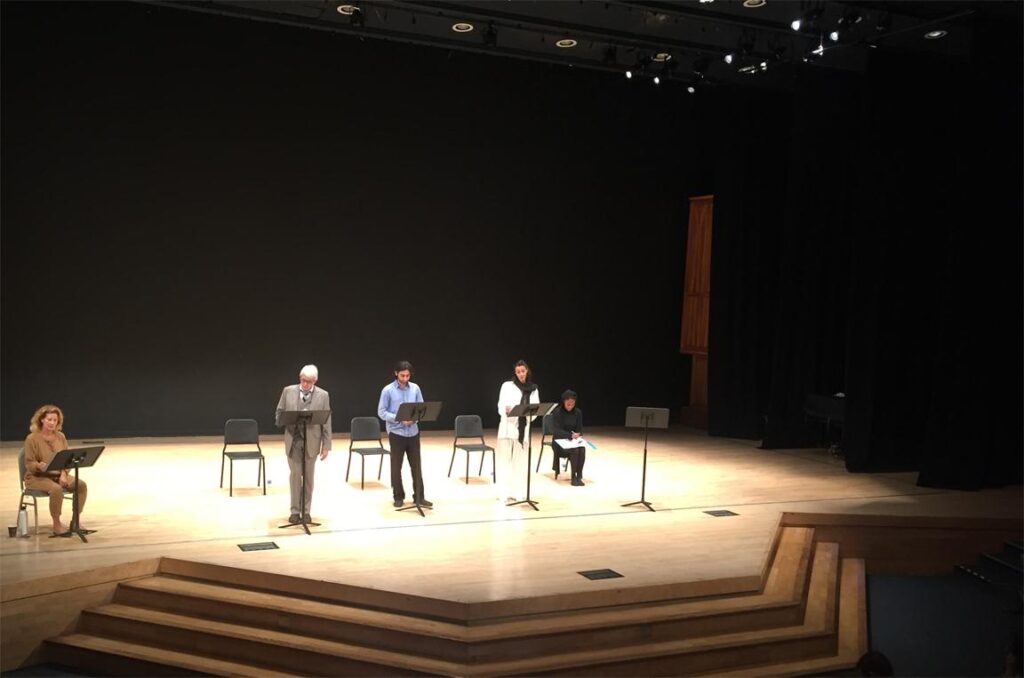
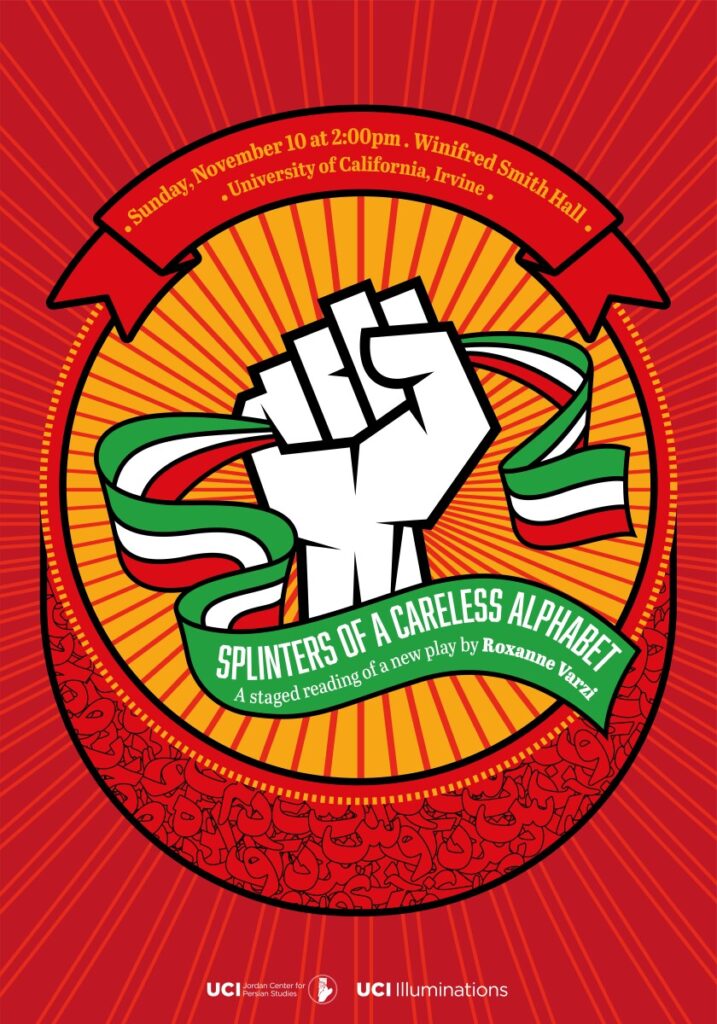
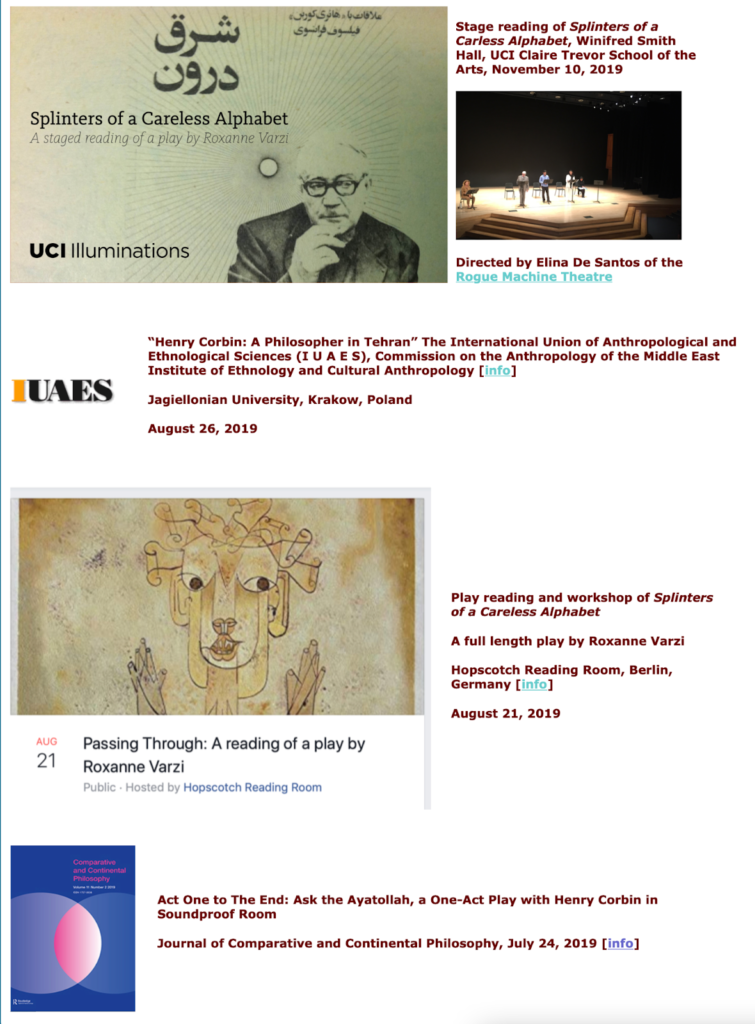
I am also writing a book about Corbin and turning the play into a graphic novel. I hope that my continued work on him will bring me back to Paris. I wish I were in one of my favorite cities in the world to meet you all in person!
On the chance that you should find yourselves in Los Angeles, June 3rd, please come experience my first in-person presentation since the pandemic began and the premier of Flying Away or Rapture/Rupture my second my multimedia video/sound/space installation project on climate change and religion.